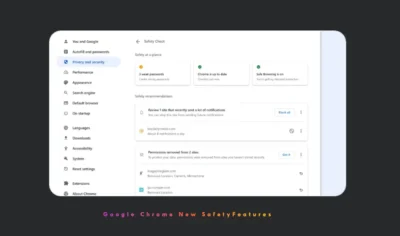Google Chrome’s latest update, Version 131.0.6778.205, brings a slew of improvements, with a key emphasis on enhancing safety and security for its users. As the internet continues to evolve with new threats emerging regularly, Chrome is committed to ensuring a safer browsing experience. Let’s dive into the significant safety and security features introduced in this update.
Google Chrome’s New Safety Features

1. Passkeys Across Devices for Seamless Sign-In
One of the standout features of this update is the ability to use passkeys across all your devices. Passkeys are a more secure way of logging into apps and websites, replacing the need for traditional passwords. They can be authenticated through methods like facial recognition, fingerprint scanning, or a screen lock.
With Google Password Manager, passkeys are available across your computers and Android devices, creating a seamless, secure experience. You can develop passkeys on Android, ChromeOS, macOS, Windows, and Linux devices, making it easier than ever to access your accounts safely.
Users can set up a Google Password Manager PIN to add an extra security layer. This ensures that your passkeys are end-to-end encrypted, meaning no one, not even Google, can access them. To access these passkeys across devices, you’ll need to either enter your Google Password Manager PIN or use your Android device’s screen lock, providing a simple yet highly secure method for managing your credentials.

2. Revamped Safety Check for Automatic Protection
The Safety Check feature has been significantly enhanced in this update. Previously, users had to manually initiate a Safety Check, but now it runs automatically in the background to ensure you are always protected.
Several key proactive actions are now taken without requiring user intervention:
– Auto-Revoke Unused Site Permissions: Chrome will automatically revoke site permissions that you haven’t used in a while, safeguarding your privacy by limiting access to your personal data.
– Auto-Unsubscribe from Abusive Notifications: Unwanted and abusive notifications can be a major annoyance, and now Chrome will automatically unsubscribe you from them, protecting you from potential spamming and phishing attacks.
– Identify and Warn About Harmful Extensions: The browser will also warn you about potentially harmful browser extensions, helping you avoid malicious downloads that could compromise your data.
Read Also: Unleashing Google’s BARD AI: 5 Key Advantages Over ChatGPT
Google Chrome’s New Security Features

1. AI-Powered Real-Time Protection Against Phishing and Malware
Google Chrome has always been known for its robust security measures, and with this new update, it takes protection a step further by leveraging AI for real-time defense against phishing and malware attacks. The updated AI-driven system provides the strongest level of security, detecting potentially dangerous websites, files, and extensions before they can harm you.
To enable this feature:
– Open the Chrome browser menu (three dots in the browser’s top-right corner).
– Go to **Settings** Option > **Privacy and Security** > **Security**.
– Under the **Safe Browsing** section, select **Enhanced Protection** option.
Once activated, this feature will continuously monitor your browsing activity and provide alerts for any suspicious activity. Whether visiting a website or downloading a file, Chrome’s enhanced protection powered by AI ensures that you are always one step ahead of cyber threats.
Conclusion
With the release of Version 131.0.6778.205, Google Chrome has once again prioritized user safety and security. The integration of passkeys across devices, automatic safety checks, and AI-powered real-time protection make Chrome one of the most secure browsers available today. These improvements not only offer users peace of mind but also make everyday online activities safer and more convenient. Whether you’re browsing, shopping, or managing your accounts, Chrome’s latest update is designed to keep you safe from threats while offering a streamlined and secure experience across all your devices.






Leave a Reply